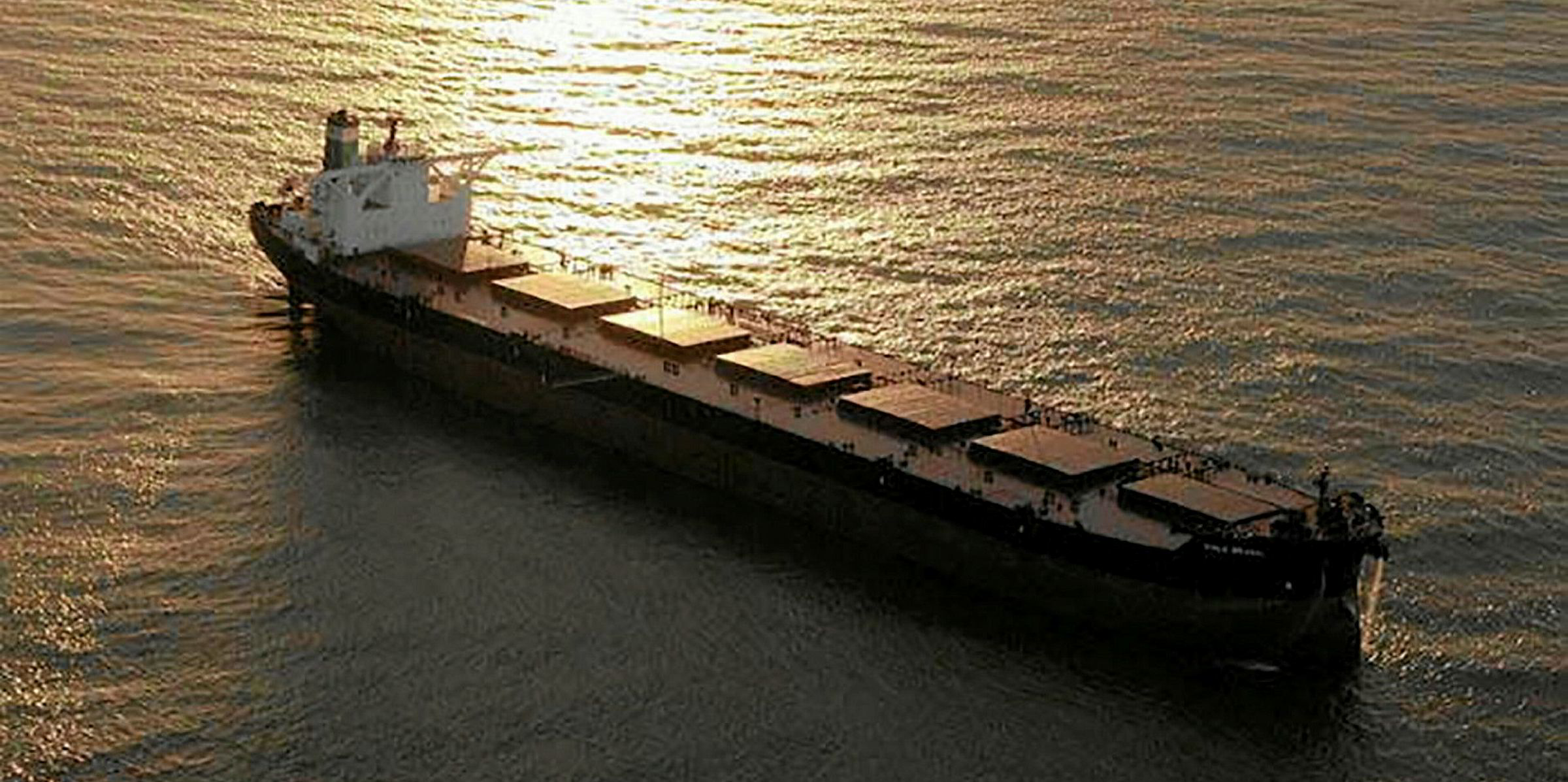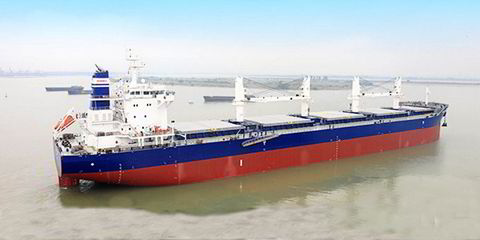Five years ago Omegra Shipping — then a fledgling Singapore-based dry bulk operator affiliated with Asian commodities trader Enerfo — was looking to buy several kamsarmaxes.
The strategy was part of its risk-management plan, a hedge against volatile charter rates. However, these plans were cancelled.
Lukasz Ogryczak, Omegra director and head of shipping, says this decision has paid off handsomely as the company retained its focus on operating chartered ships.
“Omegra is an asset-light business. A purely time-chartered fleet with option periods gives flexibility to adjust market exposure as we must maintain our optimal position throughout the shipping cycles. In today’s fragile market environment, that optionality is critical.
We are aiming for the fleet size that is tradable. With the fair balance between the fleet scale and the cargo book, we manage to achieve high vessel utilisation
Lukasz Ogryczak, Omegra director and head of shipping
Fair balance
“We are aiming for the fleet size that is tradable. With the fair balance between the fleet scale and the cargo book, we manage to achieve high vessel utilisation.”
Late last year, Omegra predicted that the dry bulk market would be weak during the first quarter of this year, based purely on supply and demand.
But it did not forecast the extent to which panamax average daily earnings — which just before Christmas stood at $13,000 — would collapse to below $6,000 by the end of January, the lowest level since June 2016.
Omegra took advantage of the weak market during that dismal first quarter to gradually build up its time-chartered tonnage.
“Our flexible structure allowed us to respond by adding extra capacity to our time-charter portfolio to position ourselves for the next quarter. We expected the market to improve during the second quarter, and it did rebound, with panamaxes trading between $10,000 and $12,500 per day,” Ogryczak explains.
Added capacity
By extending charters and taking delivery of two additional kamsarmaxes, capacity was added to the fleet portfolio during the first and second quarters, while the average age of the period chartered fleet was reduced from 8.6 years to seven years.
As of this week, Omegra has 25 bulkers under its commercial control on a mix of short, medium and long period charters, the longest at three years.
Panamaxes and kamsarmaxes are the main workhorses with 17 on charter, including seven on medium or long-term periods, while the remaining eight are handymaxes and supramaxes on trip or short period charters.
Our biggest asset, and the highest value, is our people — our strong team of freight traders and operators who are behind our success
Lukasz Ogryczak
Vessels in other bulker size sectors are chartered as and when required.
Omegra is described by brokers as being a very selective charterer, something that Ogryczak says is an accurate description.
The company will only charter young, Japanese-built ships from financially stable owners and tonnage providers.
“We do not get involved in charter chains. We want good quality ships that we know will perform so that we can deliver on our promises to our customers and maintain their trust,” Ogryczak explains.
He adds that the plan to acquire ships will remain on hold for the foreseeable future.
“We are happy to continue with our asset-light model. Our biggest asset, and the highest value, is our people — our strong team of freight traders and operators who are behind our success. Our team has an ability to achieve optimal combination and match the right ship with the right cargo.”
Solid financial returns
Despite the overall dismal earnings in the panamax and supramax markets during the first quarter, Omegra still came out profitable during the first half of the year.
In total, it generated trading revenue of $122m — 22% above budget.
As a private company, Omegra does not disclose its profit earnings, but according to Ogryczak the after-tax figure was 30% above the budget for the period.
“The profit was driven by logistical optimisation of trading patterns and an increased number of operated voyages, and arbitraging vessels and cargoes,” Ogryczak says.
“Our business model was able to generate positive margins by combining vessels and cargoes. With accumulated cargo volumes of close to four million metric tonnes, Omegra was able to outperform the market, generating average daily earnings of just over $14,500 on panamaxes and just over $11,000 on supramax vessels."
Exploiting weak market
Ogryczak describes Omegra as being well positioned and prepared for the remainder of 2019.
He expects that markets will continue to be volatile, but overall near-term prospects at least look positive for the entire dry bulk market.
“In June, the dry bulk market went beyond everyone’s expectations. Panamax rates improved by 65% in just three weeks, recording an incredible $1,000-per-day improvement on 21 June.
There have only been three other days in the past decade where panamax rates increased by $1,000 in a single day, and the last time that happened was in 2013," he says.
“Last week, dry bulk rates increased across the board again, with the panamax sector being the biggest story in the market. Panamax rates have now climbed to the highest level since December 2013, and have continued to rise. This is due to strength in South American spot grain cargoes and various other spot material volumes.”
Ogryczak also attributes recent market improvements to very low fleet growth, and he calculates the 300 or so bulkers expected to head into shipyards this year to install scrubbers means an effective fleet reduction of up to 4%.
$1bn goal set for 2026
While Omegra is often regarded as the shipping arm of Enerfo, Ogryczak is quick to point out that it is a separate, stand-alone entity. The two share the same majority shareholders in the form of Indonesian business conglomerate FKS Group.
Omegra continues to be Enerfo’s shipping provider, and mainly handles grain cargoes, with smaller volumes of coal, minerals, metals and fertilisers thrown into the mix.
Outside of Enerfo, Omegra has developed a significant volume of third-party business, although Ogryczak prefers not disclose the scale.
Third-party business is key to Omegra’s strategy to maximise shipping operations, keeping its vessels full on both front-haul and back-haul legs.
“It is always important to add value to an organisation and not just be an internal cargo carrier,” Ogryczak says.
Trio of tie-ups
This year Omegra has entered into three major tie-ups with what Ogryczak describes only as a large Japanese trading house, a midsize Danish shipowner and a Swiss grain and fertiliser trader.
These agreements cover time charters, time charter sharing, the integration of front-haul and back-haul of cargoes, and putting ships in pools.
Ogryczak says agreements such as these will help Omegra to grow by optimising its business model based on a synergy programme of combining different trading patterns.
“Loyal returning customers and repeated long-term business partnership are the hallmarks of our consistent performance and service quality, which have been key to our success,” he concludes.
“Since we first started, we have had an average annual revenue growth rate of 26%. If that continues, we will be a $1bn revenue company by 2026.”





